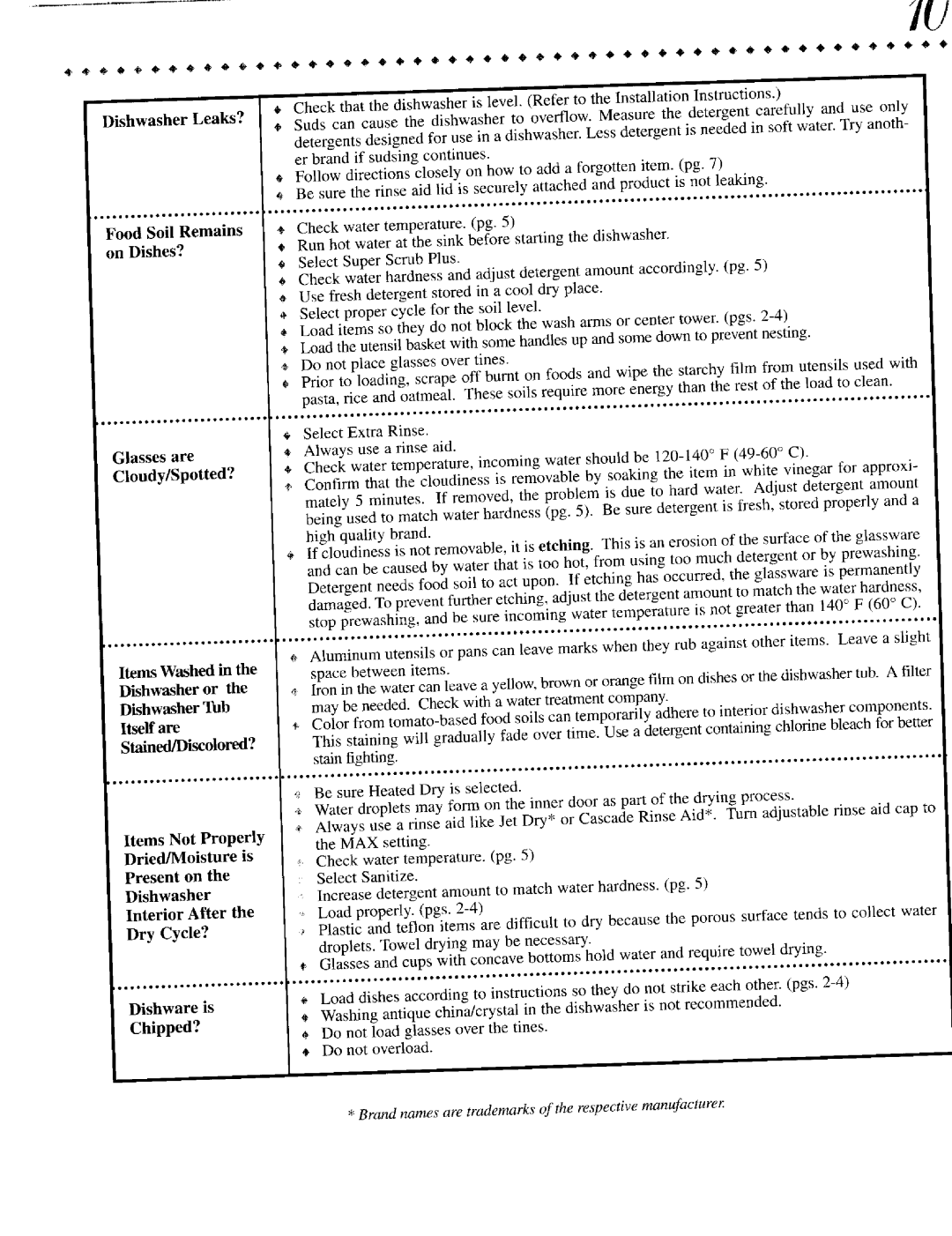JDB9910, JDB8910 specifications
The Jenn-Air JDB9910 and JDB8910 are premium dishwashers that exemplify modern kitchen technology and design. Both models are built to cater to the needs of discerning homeowners who value efficiency, performance, and style in their culinary spaces.One of the standout features of the Jenn-Air JDB9910 and JDB8910 dishwashers is their advanced cleaning system. Equipped with a powerful motor and a multi-stage filtration system, these dishwashers effectively remove food particles and grease, ensuring spotless results on every load. The Precision Dry technology enhances drying performance, utilizing a combination of heat and airflow to achieve optimal drying results without the need for pre-rinsing.
Both models incorporate an ultra-quiet operation, maintaining noise levels as low as 44 decibels. This feature allows users to run their dishwashers during any time of the day or night without disturbing the household. The sleek, stainless steel design is not only aesthetic but also resists smudges and fingerprints, making cleaning the exterior a breeze.
The flexibility of these dishwashers is another notable characteristic, with a customizable interior that features adjustable racks and a third-level utensil rack for optimal space utilization. This thoughtful design accommodates a variety of dishware sizes and shapes, from tall pots to delicate glassware. Furthermore, the models provide multiple wash cycle options, including Energy Saver, Normal, and Heavy cycle, allowing users to choose the best setting for their specific load.
Additionally, both dishwashers incorporate smart technology, featuring Wi-Fi connectivity that allows for remote monitoring and control via a smartphone app. Users can receive notifications, check the cycle status, and even schedule wash times from anywhere in their home.
Energy efficiency is another key aspect, with both models meeting stringent ENERGY STAR guidelines. This ensures that while they deliver powerful cleaning performance, they also minimize water and energy consumption, providing an eco-friendly solution for modern kitchens.
In summary, the Jenn-Air JDB9910 and JDB8910 dishwashers unite style, superior cleaning performance, and innovative technology to enhance the kitchen experience. Their combination of quiet operation, flexible loading options, smart capabilities, and energy efficiency make them excellent choices for homeowners looking to elevate their culinary routines.

